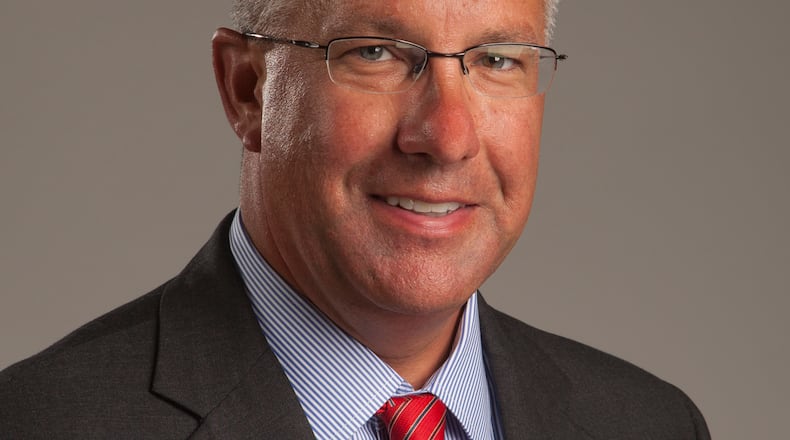About 79 percent of patients in the Dayton region on an average day are using Medicare or Medicaid, compared to 72.7 percent in the U.S., according to the Greater Dayton Area Hospital Association.
LOCAL NEWS: OD deaths lowest of year, but ‘no possible way … the addicts are gone’
“What that means is our population in our region is generally older, somewhat less affluent and that puts greater pressure on our insurance rate. In the past, you just cost shifted and that’s becoming harder and harder to do,” said Bryan Bucklew, president and CEO of the Greater Dayton Area Hospital Association.
Compared to other metros in Ohio, Cincinnati has about 75 percent of patients per day using Medicaid and Medicare, Cleveland has about 70.5 percent, Columbus has about 71.2 percent.
Bucklew said one of the challenges is that the Dayton region has lost large companies in recent years that provided their employees with benefits. Since coming on board at GDAHA in 2005, Bucklew noted that major employers like NCR, Mead, Delphi, and GM have pulled out of the region.
“There are less employers we can cost shift to,” said Tom Duncan, chief financial officer for Premier Health, which has the state’s third largest provider of Medicaid, Miami Valley Hospital, under its umbrella.
RELATED: With CareSource expansion, all U.S. counties to have exchange option in 2018
This lack of large employers with benefits helped contribute to a large population of people in Dayton without insurance or with thin coverage, who tend to not seek out preventative care and then have worse health problems and need more costly procedures down the road.
People covered by Medicaid tend to not have access to routine preventative care as often as someone who has commercial insurance to pay for their preventative care, which can lead to Medicaid patients needing costlier care for more serious medical conditions when they do come in, said Todd Anderson, Kettering Health Network’s executive vice president of finance and clinical integration.
LOCAl NEWS: Ohio patients’ HIV status revealed by Aetna
“The hospitals in Dayton are challenged when we see very sick Medicaid members that come in,” Anders said.
There are ways to mitigate the financial strain from having so many patients using Medicare and Medicaid, said hospital officials.
While Premier can be the more costly of the two major systems in Dayton, Duncan said it is on track to cut costs by $100 million in 2017, though the average percent of Medicaid patients per day going from 19 percent in 2009 to 26 percent in 2015. Over the past five years, Premier has made about $300 million in cuts.
Representatives from Kettering Health and Premier both said they would also like to have a larger health levy in the Dayton region to help balance out costs, citing Ohio cities with more significant levy’s supporting the hospitals.
RELATED: Former Obama health secretary stops in Dayton to support ACA
The Human Services Levy in Montgomery County, which is up for a renewal vote this November, kicks about $5 million to area hospitals as part of the health services it supports.
“There’s some options for enhanced levy funds,” Anderson said.
The Dayton region is also one of nine of the top 100 largest metros in the U.S. that does not have a recognized public hospital or university hospital. These hospitals get reimbursed at a higher rate for Medicaid to make up for the high cost of being a teaching hospital and take some of the strain off of the health care systems.
“We just aren’t compensated at the that higher rate that other teaching hospitals are,” said Anderson, citing that Kettering Health Network does participate in medical education through Kettering College. “We would advocate to be categorized in a similar manor to these larger teaching hospitals.”
RELATED: Regulators weigh new air pollution fees for Dayton-area companies
RELATED: New Kettering office to offer substance abuse services
About the Author
